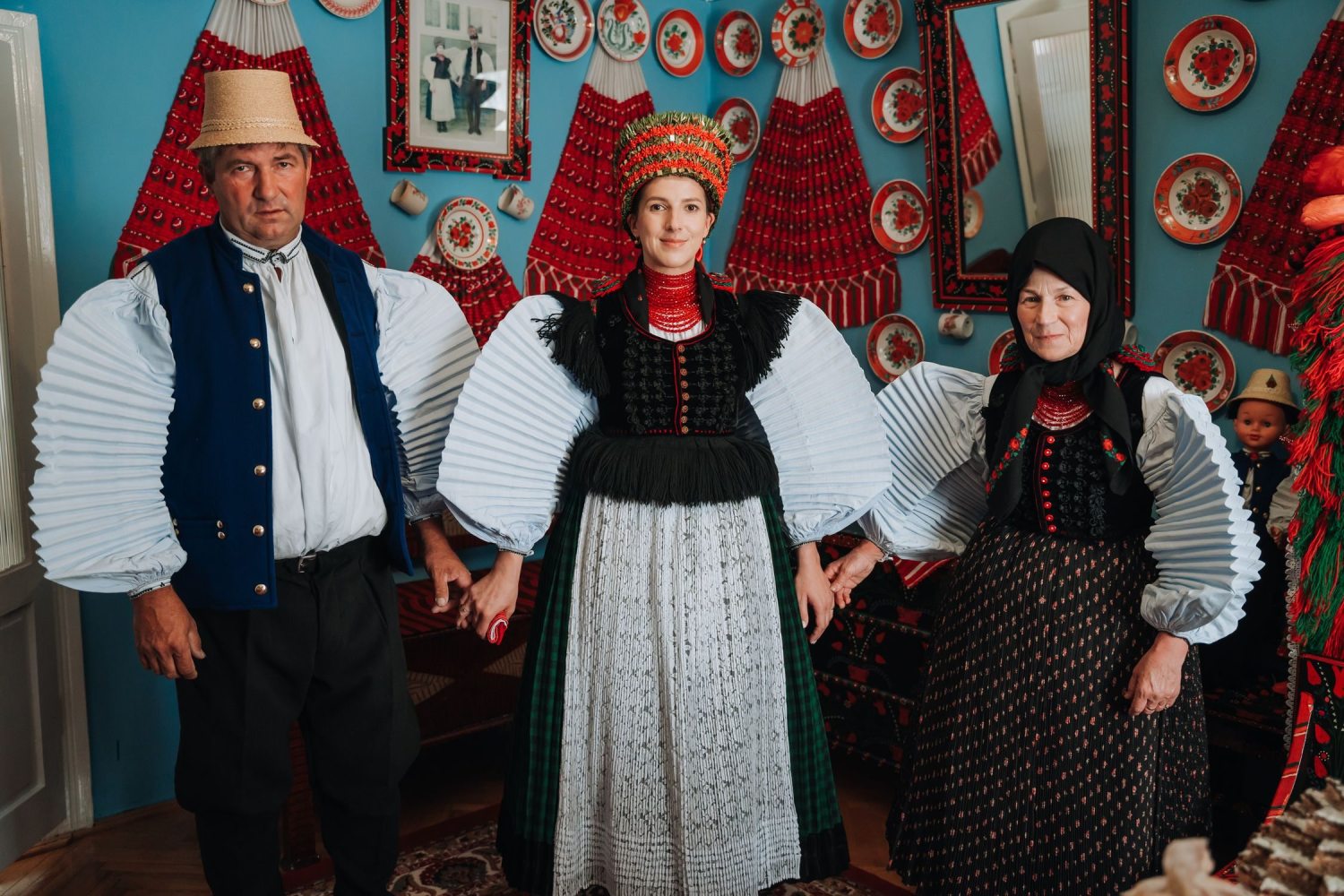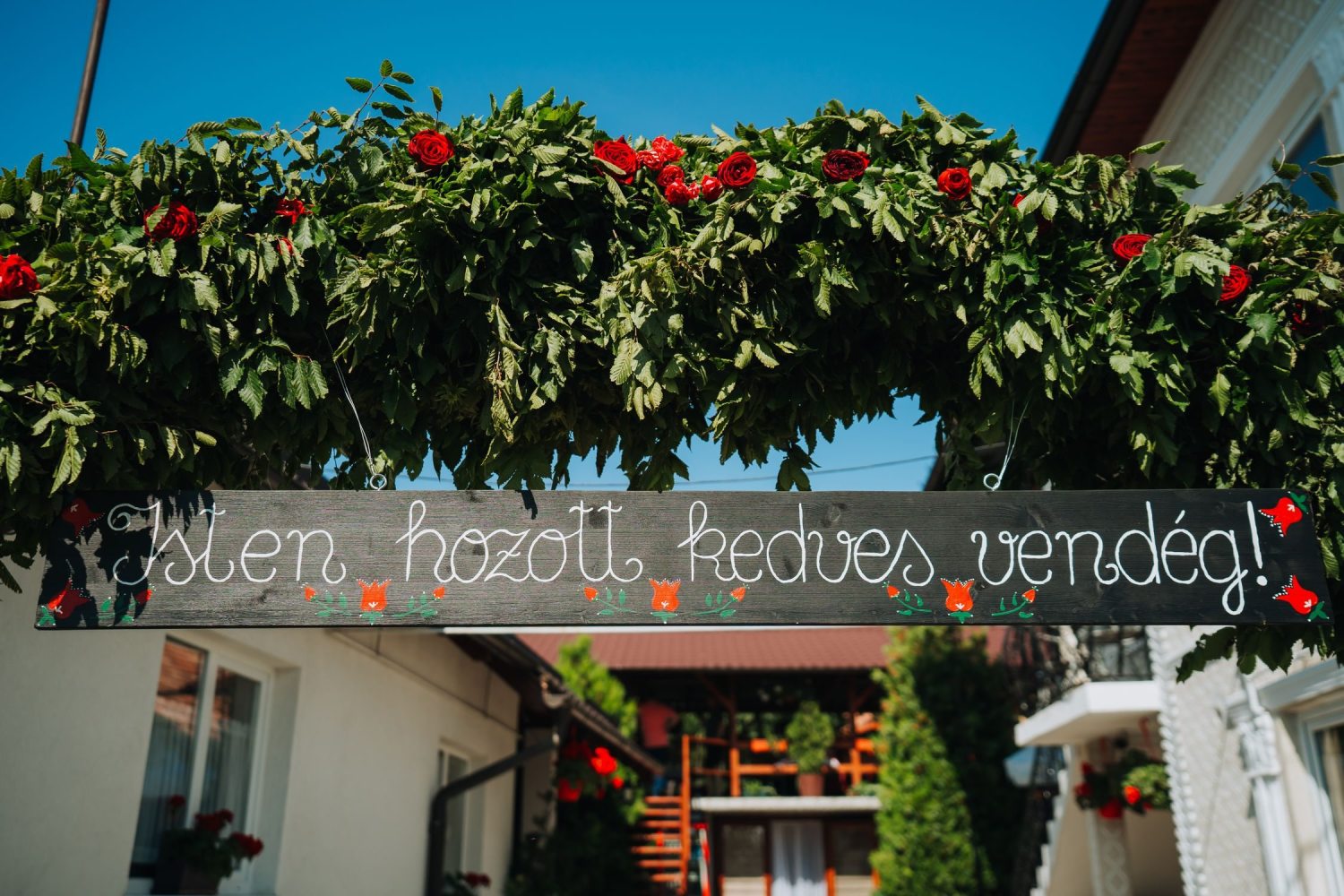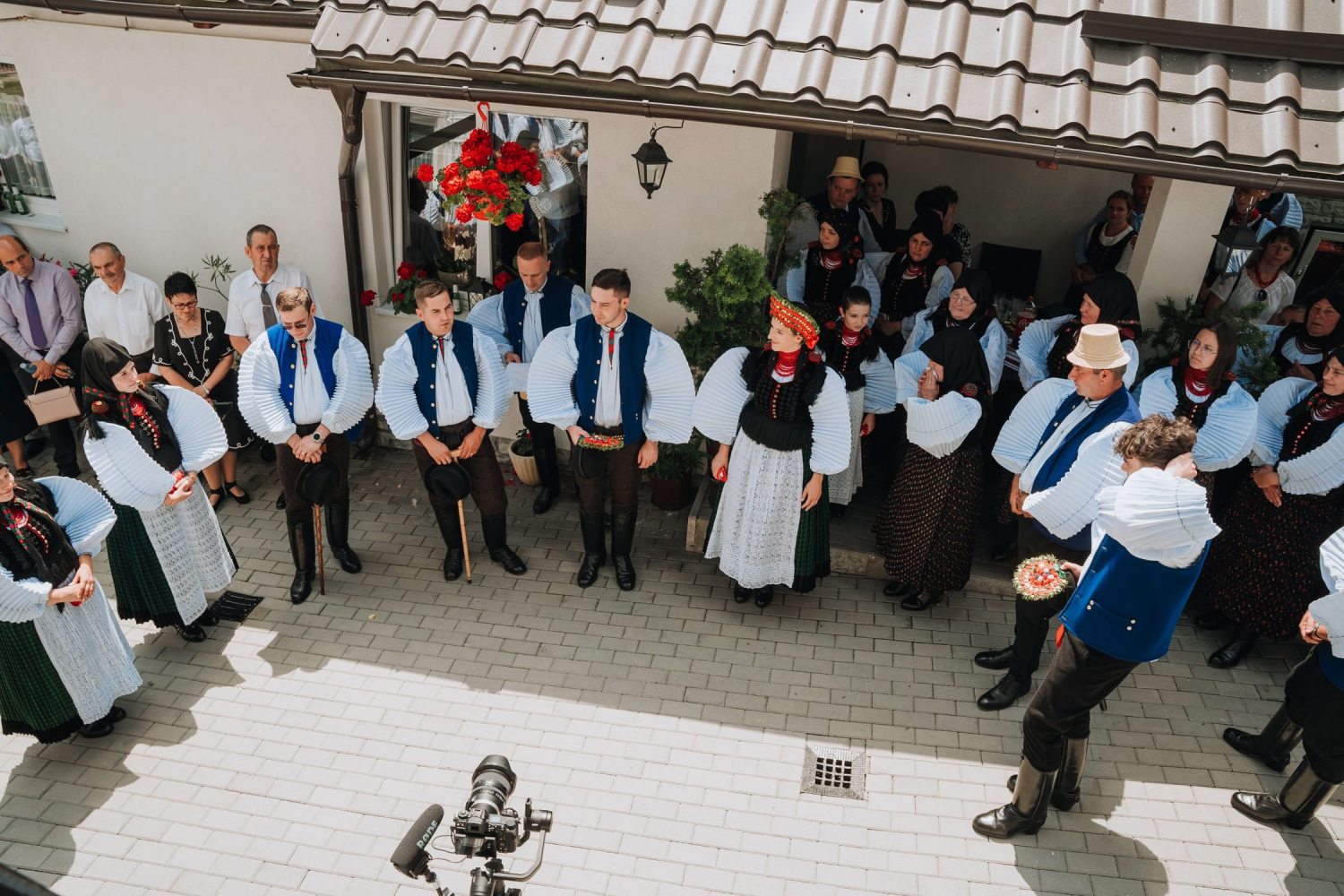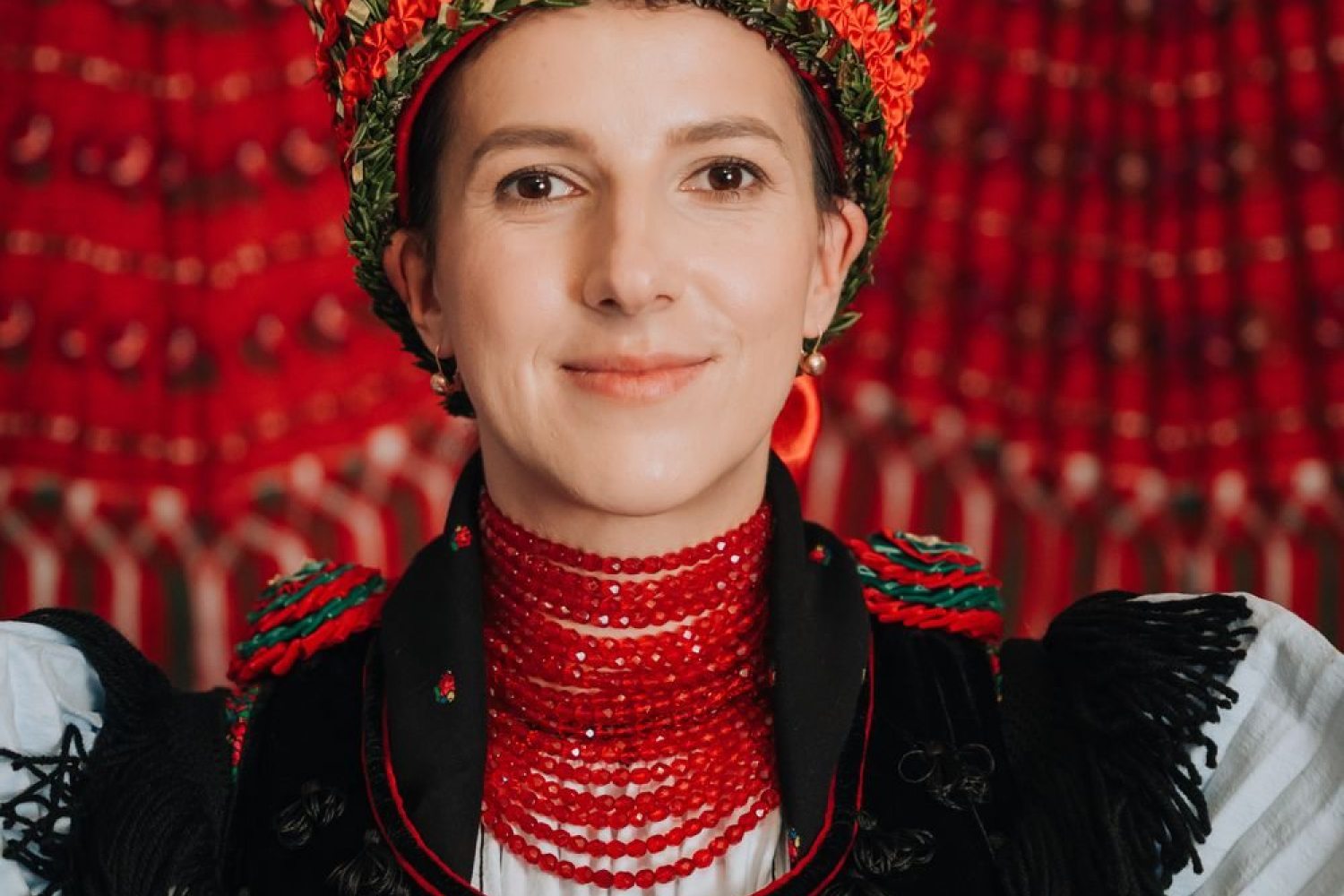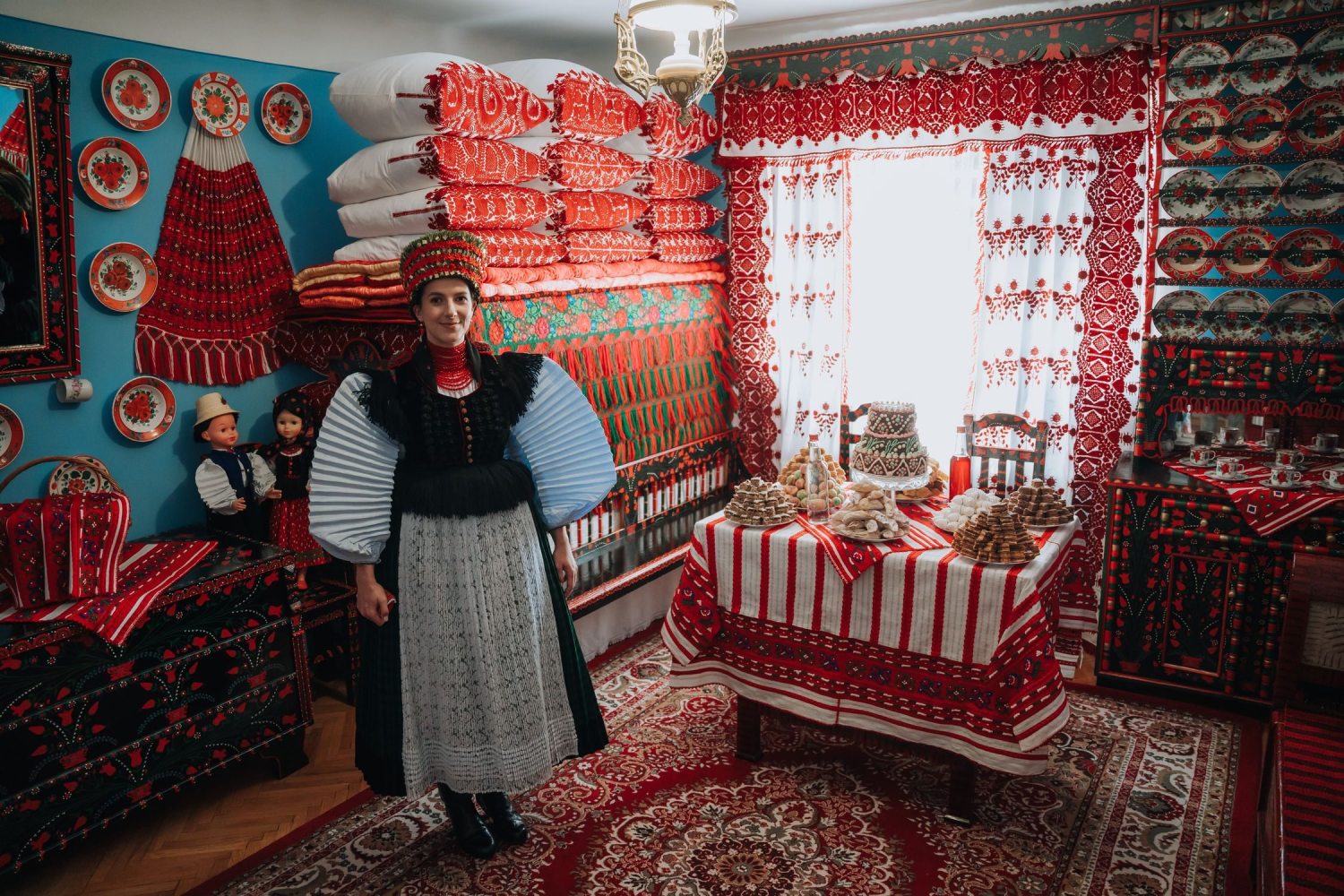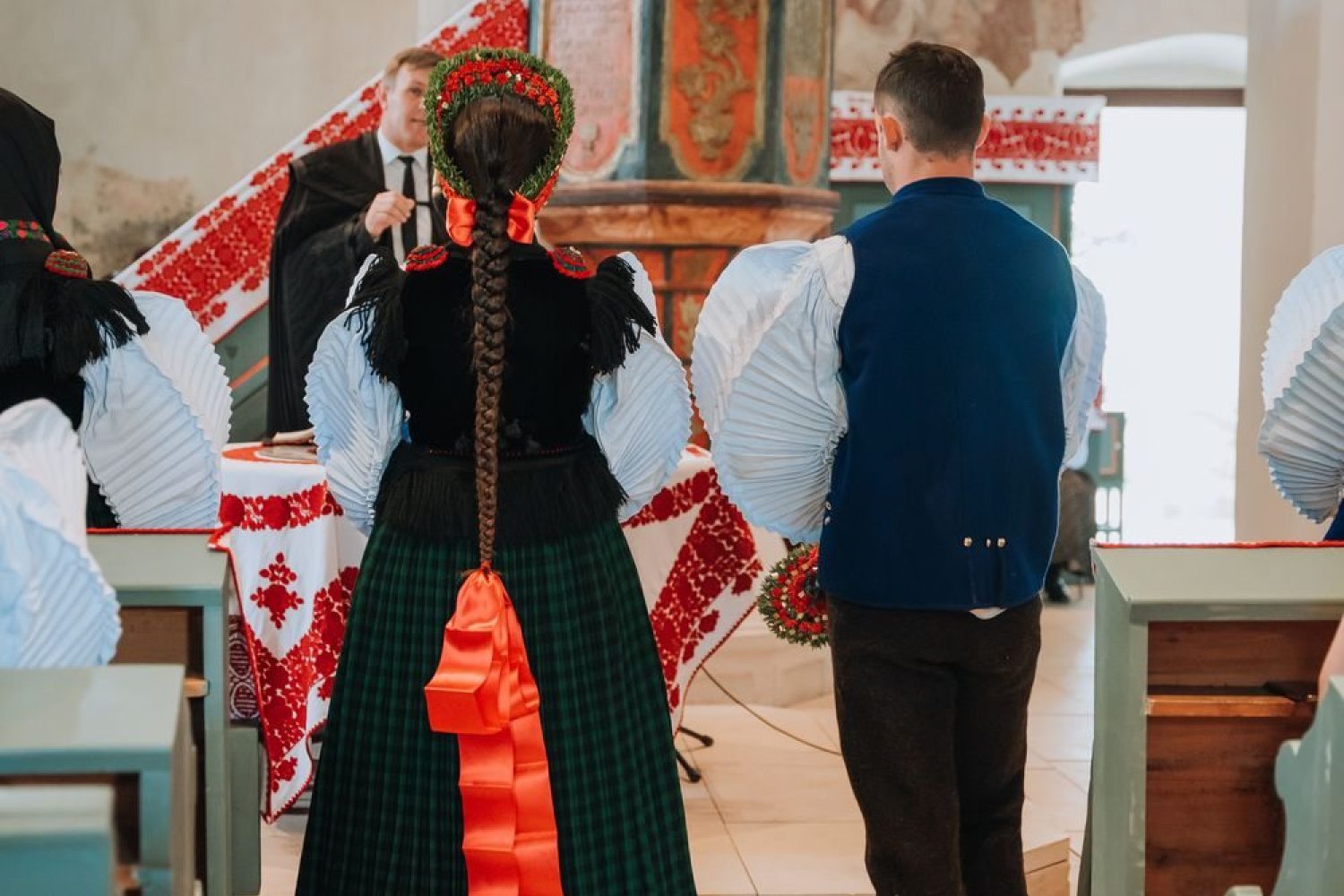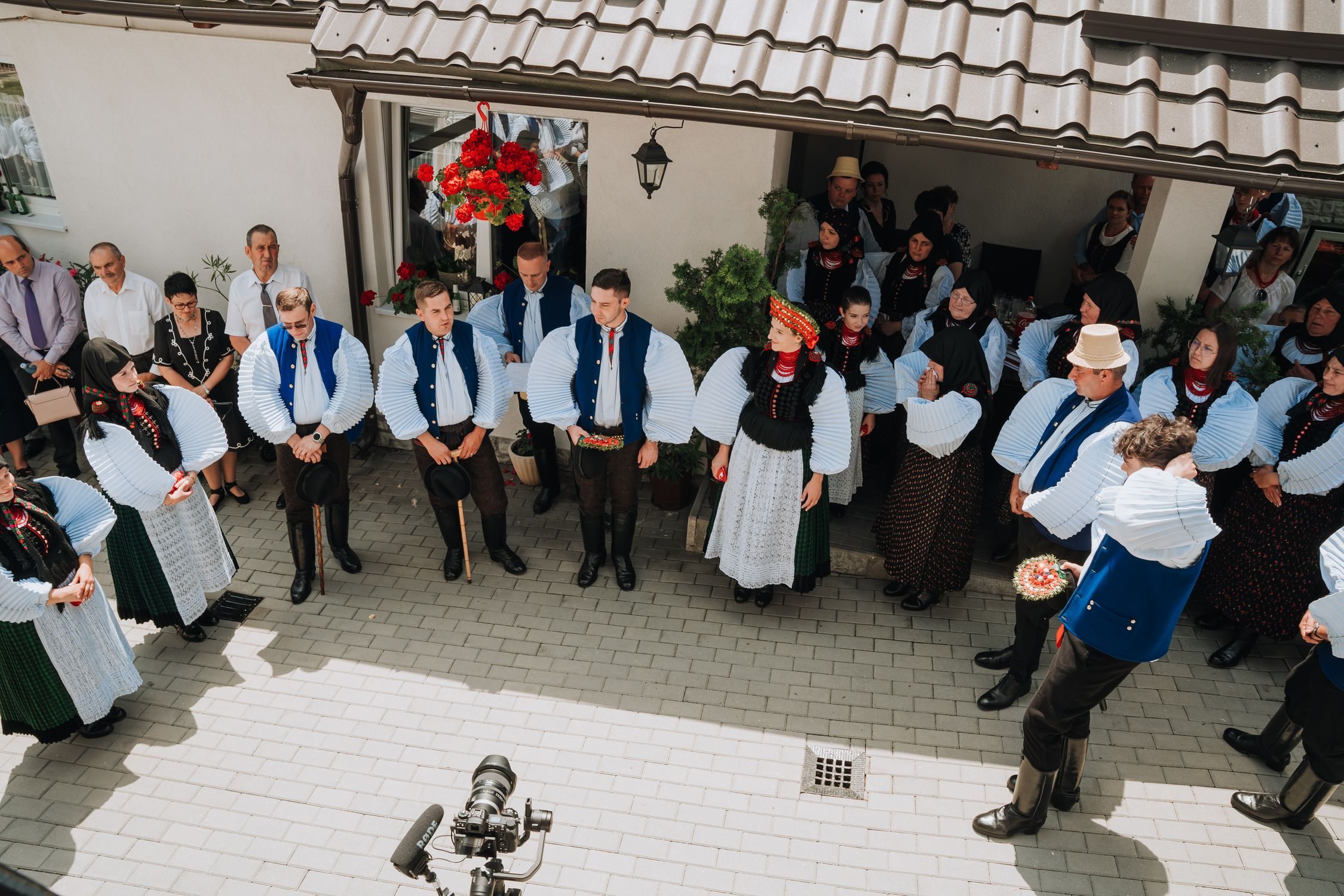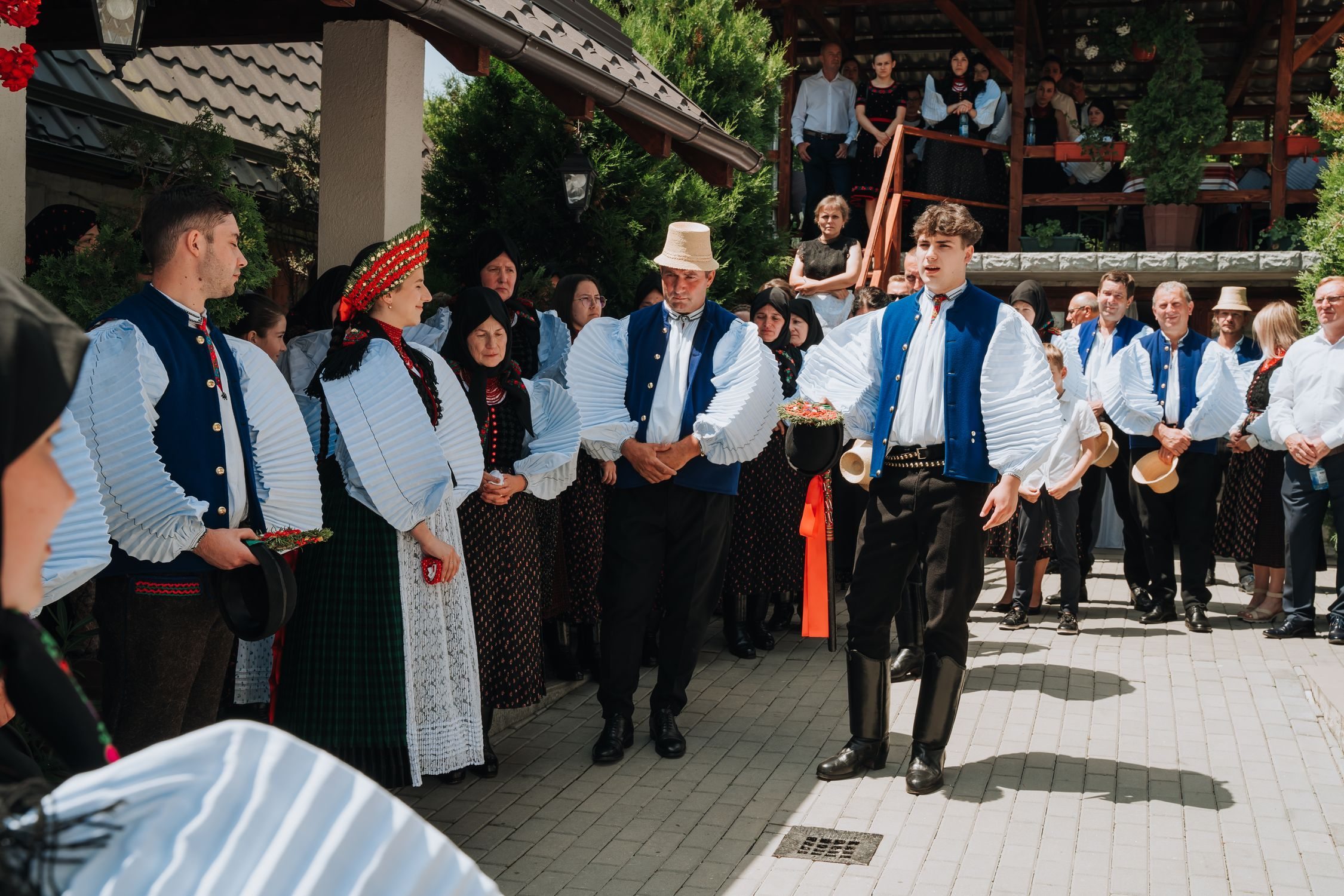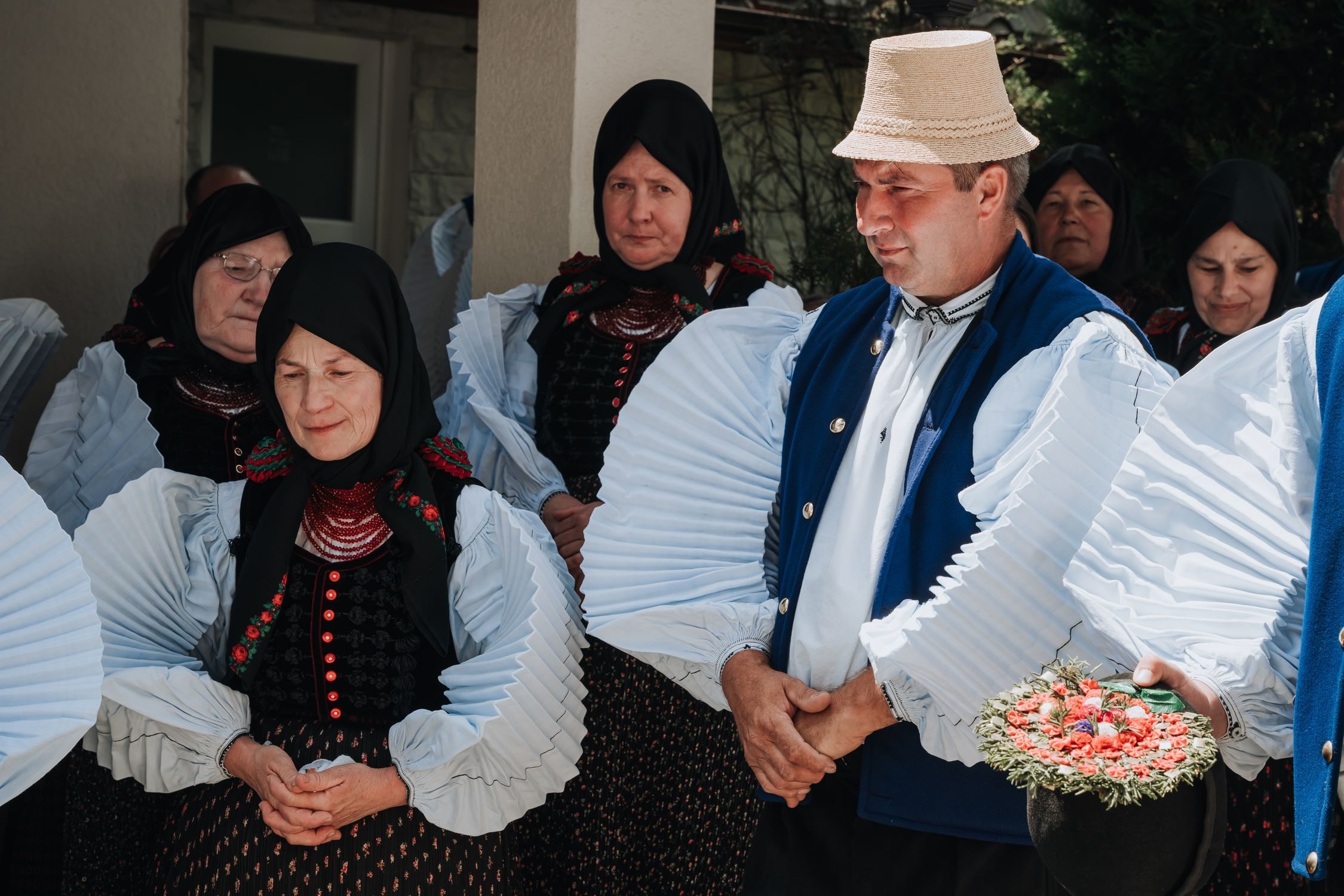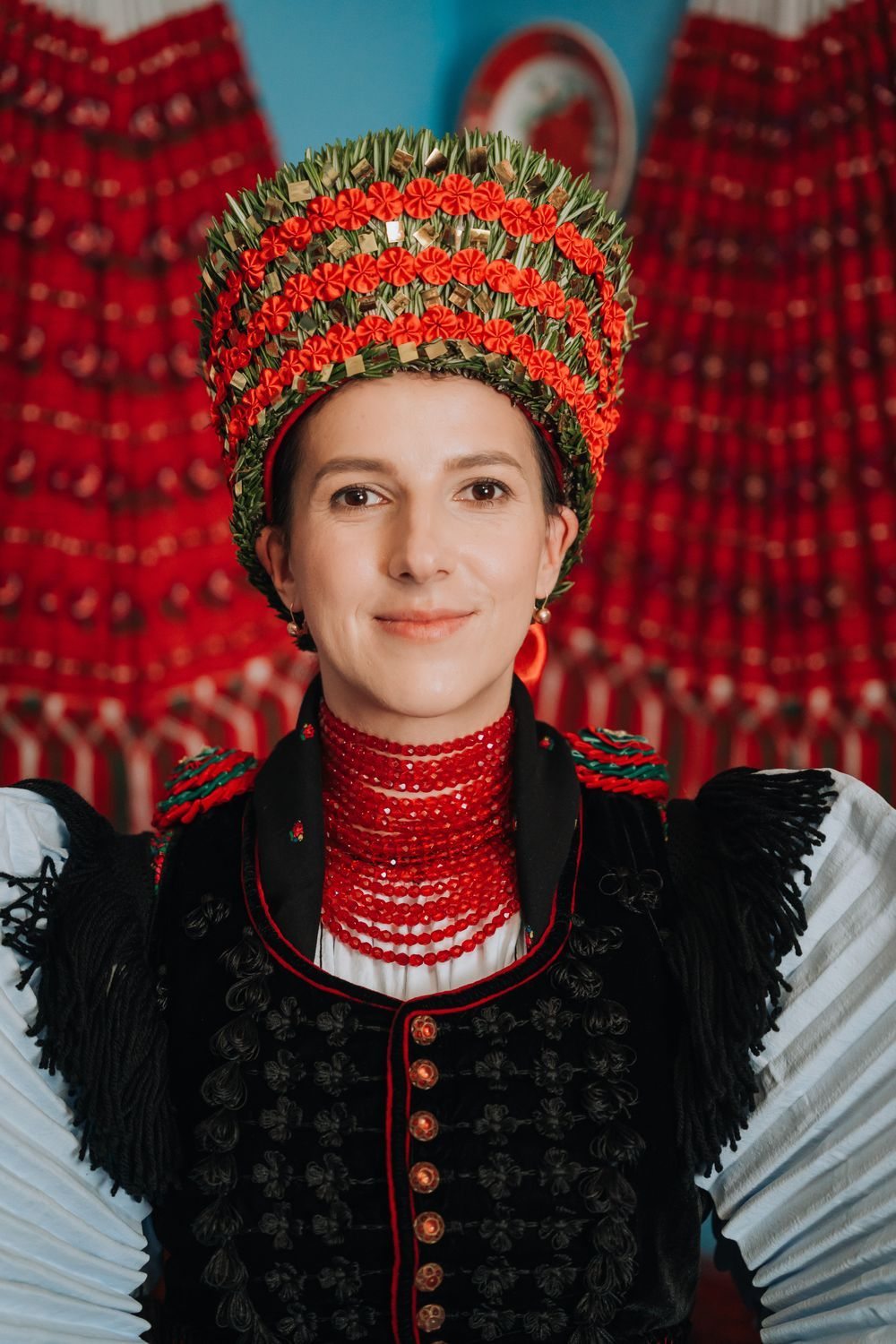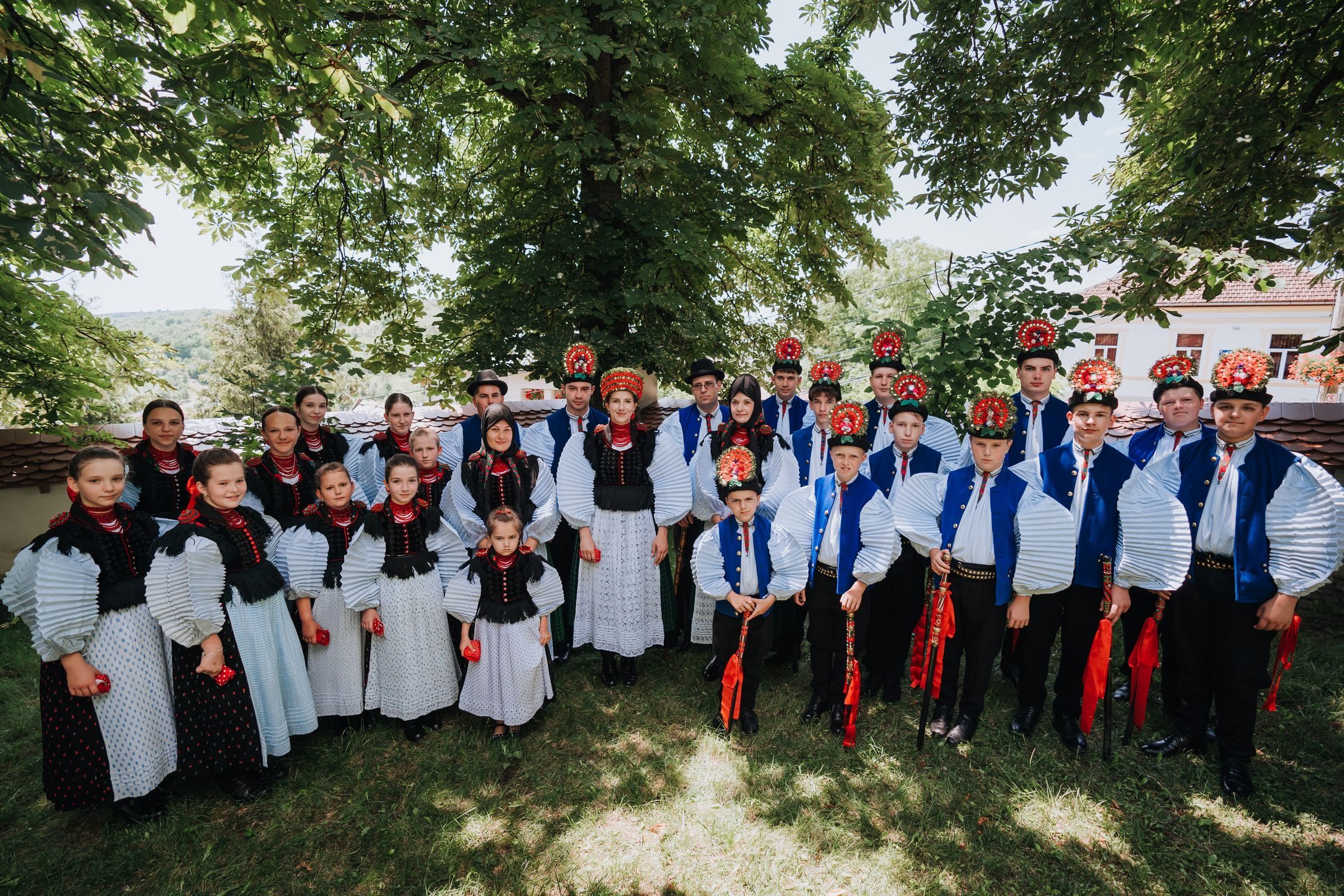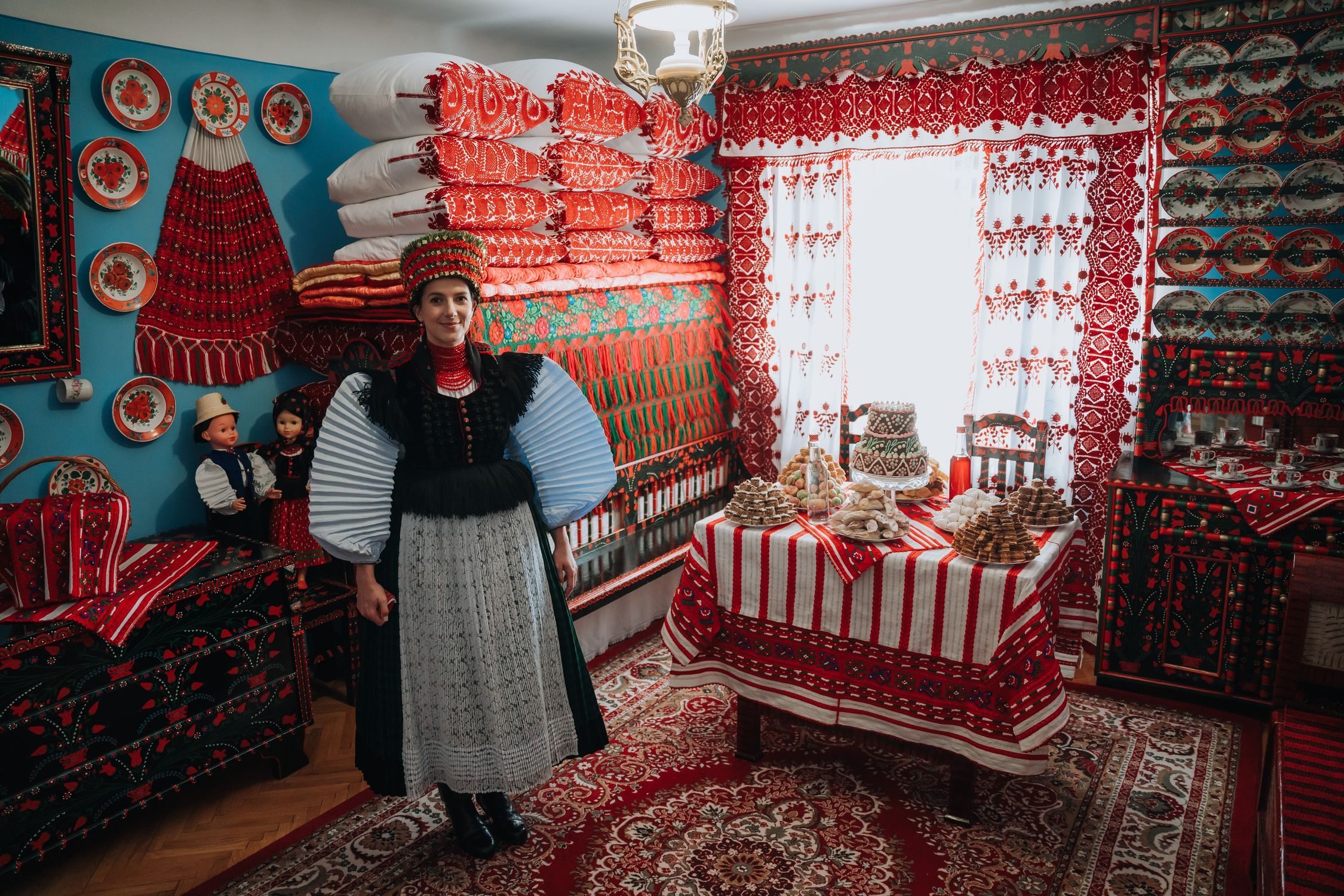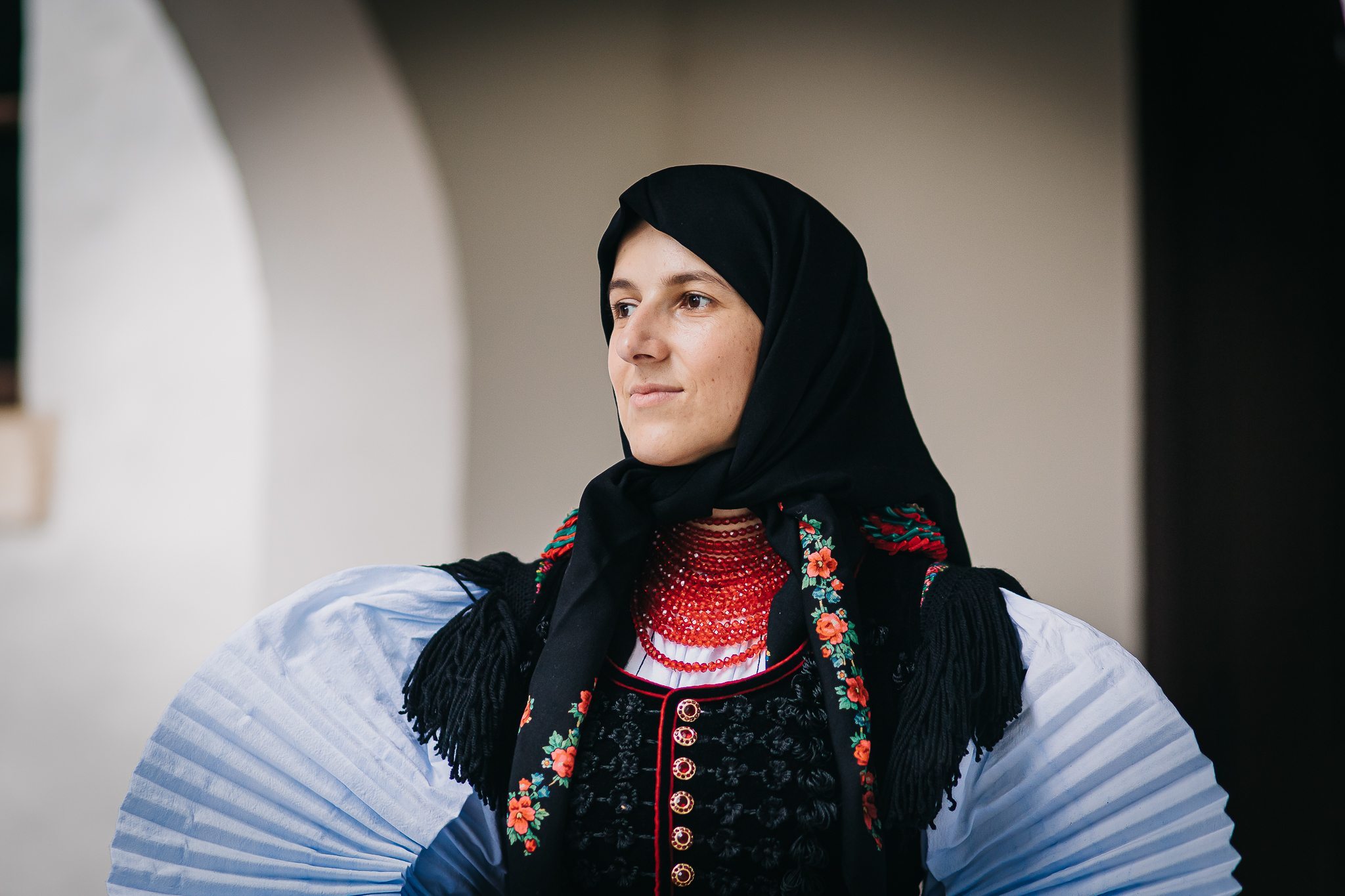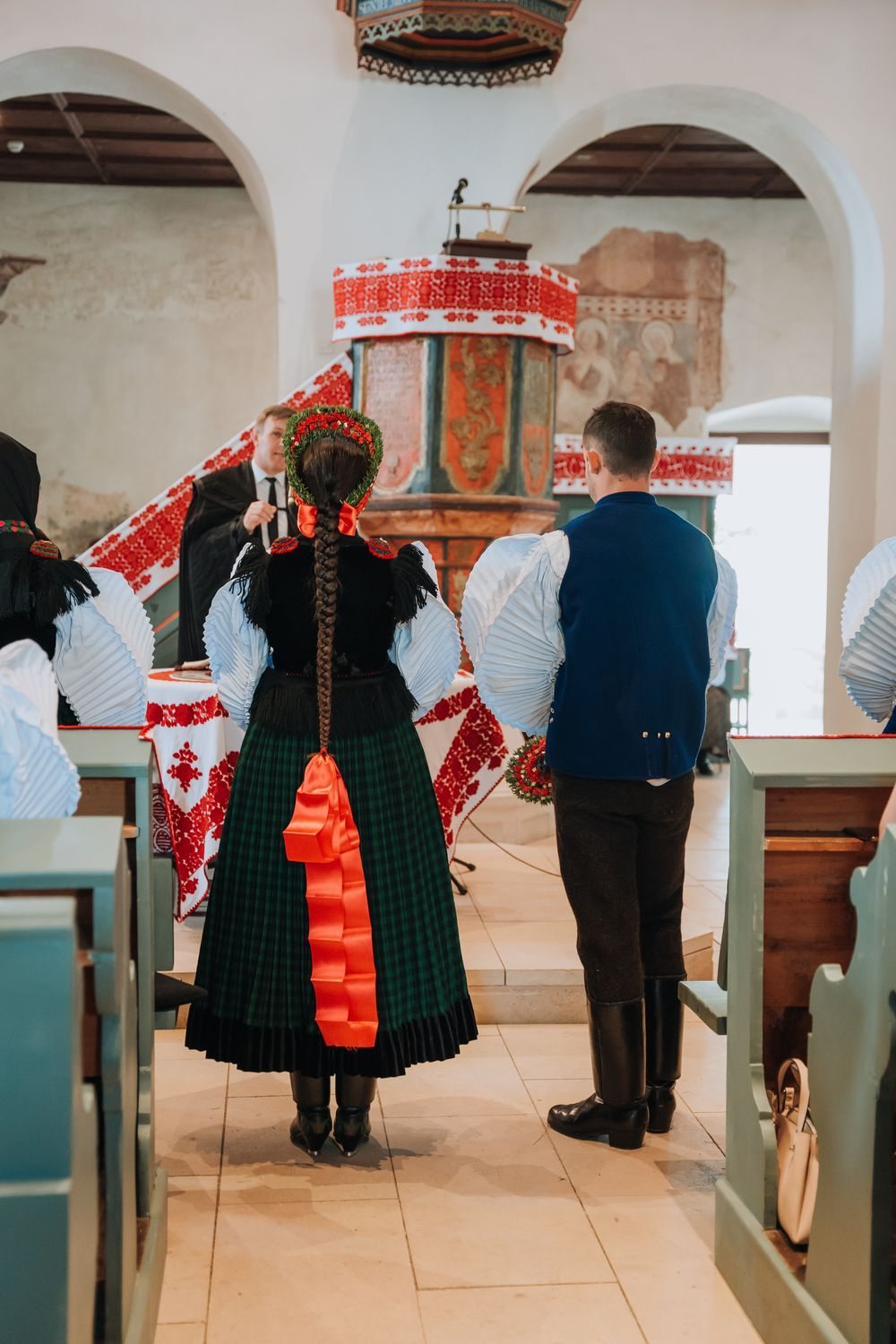“On our wedding almost everyone wore the traditional folk costume” – interview with a native girl from Szék, Romania
A native of the village of Szék (Sic) in Transylvania, she is passionate about the traditions and costumes of her native people. She organized her wedding according to the traditions of Szék, having her hair braided for the last time as a bride. She plans to build a room in her new home, where she will keep the dowry she inherited from her mother. For Enikő Zsuzsa Kocsis (neé Szabó), the community is important, and what she enjoys most about her work is helping students to fulfill their potential and build relationships.
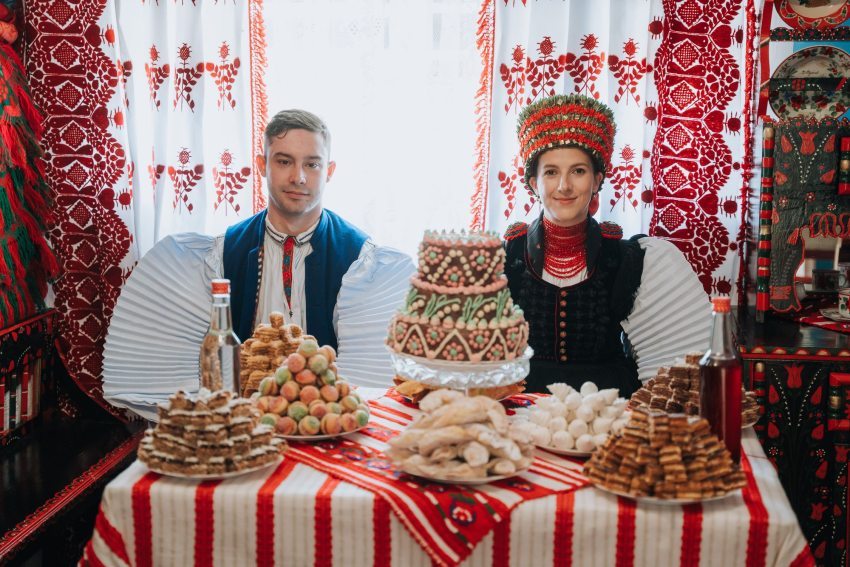
Your home village is well known for its traditions. Did you absorb these local customs as a child?
Yes, you might say I was born into it. My parents encouraged and educated me on how to keep the traditions of Szék. They were the ones who introduced me to folk dancing and folk songs at a relatively early age. I started dancing when I was ten years old, my mother and father are folk dancers too.
I inherited most of my clothes from my mother, who also taught me how to sew.
There was also a strong love of tradition in the village community. Whenever we went somewhere to perform with the dance group, it was always a special occasion, we enjoyed each other's company, and over the years we have developed close friendships. Although we no longer go to performances, there is still a good relationship between the members and we get together whenever we can.
The city of Kolozsvár (Cluj-Napoca) is 60 kilometers from Szék, you went to school there and that is where you work now. What is your relationship with the city?
I currently live in Szék, from where I commute to work in Kolozsvár. Daily commuting is not my favourite thing, but I'm used to it. I don't like the hustle and bustle of the big city, even as a high school student I couldn't wait for the weekend to go home from Kolozsvár. Most of my friends stayed in the city, but I went straight to the station after the last class. I feel at home in Szék, I grew up here and I plan to live here. I am lucky because I married a man from the village who has the same plans. I like the fact that almost everyone knows everyone here, so it's a bit like living our lives together, rather than isolated like in a big city.
Community is also very much part of your work, as you work with students in the Mathias Corvinus Collegium team in Transylvania, organizing activities for them.
Yes, I really like working with the students, and being close to them. I have been working at MCC for almost three years and I am currently the Deputy Coordinator of the High School Program in Transylvania.
The best thing about my job, apart from the variety and dynamism, is that we work for a community.
With our team, we are constantly striving to teach students new things and provide them with training that will help them get ahead in life. We strive to create opportunities where students from Cluj can get to know other students from Szeklerland, but also meet MCC students from Hungary.
Does this mean that education and talent management are close to your heart?
That's right, so much so that I can see myself working as a teacher in the future, which is why I'm currently a Maths student and in my spare time I help local students catch up in the subject. I was originally thinking about a career in civil engineering, but I realised that I wanted to live and work in a more interactive way, being around people. There, my job would have consisted of sitting in front of a computer and doing Maths.
To what extent has folk dance remained a part of your life?
We used to organize balls with the group that came together through dance years ago, but there are fewer and fewer of them now. However, we still celebrate the name days of the most popular names in the village: Márton, Pista, János and Zsuzsanna. On the name day of Zsuzsanna we have a big dance, it's an old tradition, as well as everyone dresses up in Szék folk costumes. In addition, the girls and women who bear the name Zsuzsanna prepare a treat. Around midnight, the men join together to sing a toast to Zsuzsanna, and then we, who have prepared some kind of cake, offer them a round of treats. Typically, we make funnel cakes, Zsuzsi-kifli and doughnuts.
Did you meet your husband through the dance group?
No, he doesn't dance folk dance. I have known him for a long time, but we only noticed each other four years ago. Before the pandemic, we used to go down to the village center, what we call 'the market', to get together and talk, that's where it all started. Although he grew up in a family where keeping traditions was less of a priority, he was open to wearing Szék folk costumes at our wedding.
How did you prepare for the big day?
In keeping with tradition, a few days before the wedding, the women of the village came to the family house to bake the cakes.
Zsuzsi Serestély prepared my traditional tiara, with the obligatory elements, like rosemary, small roses, and silk ribbons called 'angel hair'.
The groom and the best man also had their bouquets put together. The civil ceremony was not held on the same day, but a week before the big day, but we wore folk costumes for that, too. My mother put the dress and the attire for the occasion on me. On the day of the wedding, my fiancé and I were both in folk costume, and in the evening we changed, and I put on the white wedding dress then.
What did the ceremony look like?
At my request, almost everyone - parents, friends, acquaintances - was in traditional costume at the wedding. We had 12 groomsmen and 10 bridesmaids, they also wore traditional folk costumes from Szék. According to custom, the night before, my fiancé and I assigned who would be paired with whom, and the groomsmen had to go and ask the girls, and they had to recite a poem. According to tradition, the wedding procession started from the groom's house, marched down the street singing and accompanied by a band, and came for me, the bride.
It is interesting that when the groom arrives at the bride's house with the procession, the gate of the bride's house is closed, and the groom's best man has to "beg" to be let in, and there is always a playful "argument". Then the wedding party came in, I waited in another room as my fiancé couldn't see me yet. It is customary to bring an unmarried girl and then a married woman to the groom, and only for the third time is the bride brought to the groom, all the while wonderful rhymed lines of poetry are recited.
After that, we had the farewell - it was very beautiful and touching for me. Then we proceeded to the church, also with music, with the guests walking behind us.
After the ceremony, we headed to the groom's house, where I recited a poem to my mother-in-law, asking her to welcome me.
Then the party started.
What other old traditions did you follow at the wedding?
The last time I had my hair braided was when I got married. According to tradition, as long as you are a girl, you must wear your hair braided and also wear a headscarf, except when you are a bridesmaid or taking communion. In the old days, at dawn on the wedding day, it was customary for the bride to make her hair tied up in a bun, and from then on she was obliged to wear a bun only. In my case, it was a little different, I got my bun not on that day, but on the Sunday of the week after the wedding. I went to church with my hair in a bun first as a new bride and my husband as a new man. This is also a compulsory custom, although it used to be the rule that after the wedding, the new bride could not leave the house for a week, only on Sunday morning, when she went to church. I didn't stay at home for a week, but I wore my hair in a bun during the church service.
Did you also go to church in traditional costume?
Yes, we wear folk costumes to church quite often, it's also an old tradition here in Szék. When I was confirmed, I went to church every Sunday morning and afternoon for a year in a traditional costume with my peers. Among the older people, almost everyone wears their traditional folk attire every day. One of the most distinctive parts of this is the baggy, starched, pleated sleeves of the shirt, but I could also mention the shawl, the various skirts, aprons, the waistcoat, the boots, and for men the blue waistcoat or the green sweater, and the straw hat.
It is very important what we wear and when we wear it. For example, it makes a difference which skirt you wear to dance, and which one to church, or which shawl you wear on weekdays, and which one to Sunday services.
Moreover, you should also make a difference whether you are wearing it to church in the morning, or in the afternoon.
What are your plans for the future?
My husband and I are currently building our home in Szék, and we are looking forward to it. I am planning to have a room in my home where I would keep all the embroidered tablecloths, pillowcases, and all the decorative objects, just like I used to have in my family's house. And I will continue to keep the traditions, it's part of my life.


